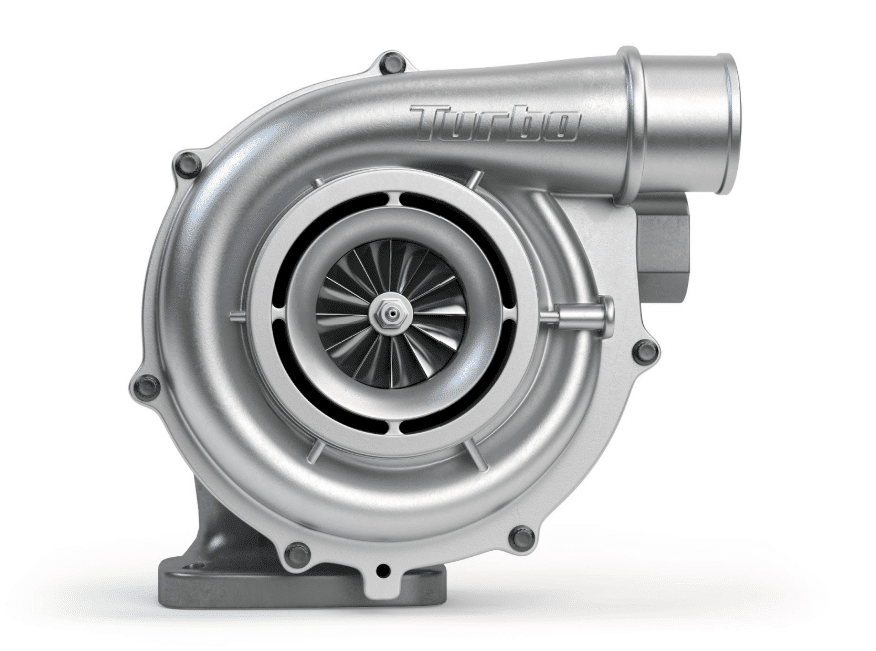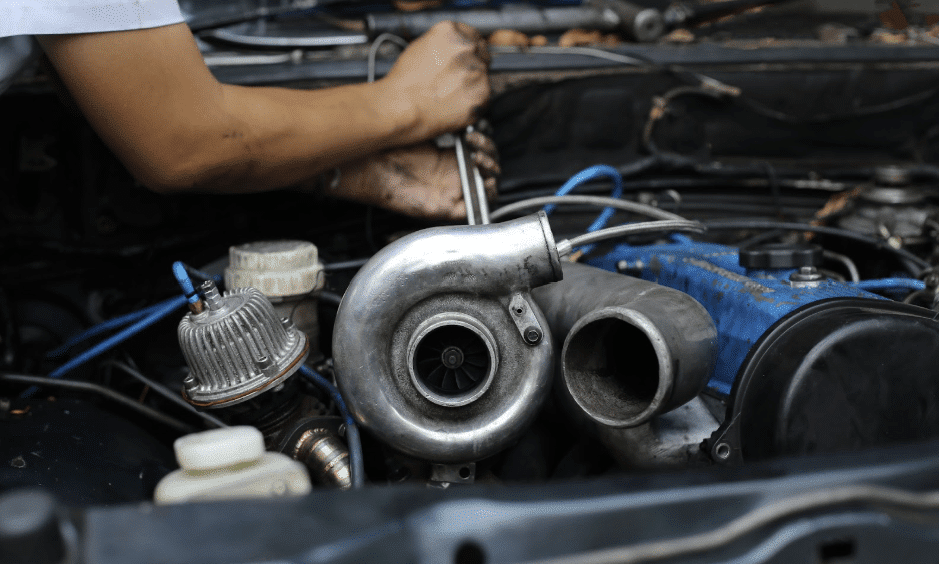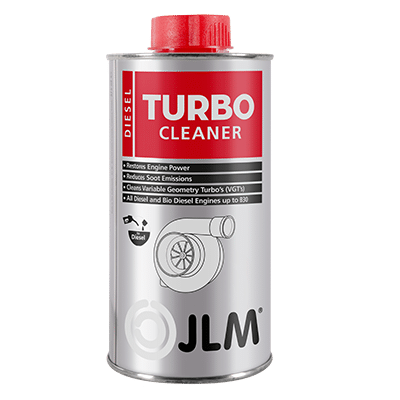A turbocharger is a powerhouse addition to your car’s engine, designed to boost performance while maximising efficiency. But what happens when this critical component starts to fail?
In this guide, we’ll explore how turbos work, the telltale signs of turbo failure, and, most importantly, how you can prevent costly repairs with maintenance. Keep reading to save money with JLM products and keep your car running like new.
What is a turbocharger for a car, and why is it important?
A turbocharger, or “turbo,” is a component that increases an engine’s efficiency and power output by forcing more air into the combustion chamber. By doing so, it allows smaller engines to produce the same power as larger ones, making vehicles more fuel-efficient and environmentally friendly.
Turbos are particularly beneficial for motorists seeking better performance without sacrificing economy, but they require care to avoid expensive failures.

How does a turbo work?
Turbos operate by harnessing energy from the exhaust gases your engine produces. Here’s a step-by-step breakdown:
- Exhaust gas collection: Exhaust gases from the engine flow into the turbocharger’s turbine.
- Turbine rotation: The force of the gases spins the turbine, which is connected to a compressor via a shaft.
- Air compression: The compressor draws in air and compresses it, increasing the oxygen available for combustion.
- Charge-air cooler: The compressed air then passes through a charge-air cooler to increase its density before entering the engine.
- Boosted engine power: The compressed air enters the engine where it mixes with fuel to burn more effectively, improving combustion efficiency and increasing power output.
This process delivers better power, performance, and fuel economy, but it’s not without its downsides.
Turbo failure: Causes and symptoms
While turbos are built to last, they aren’t immune to failure. Common causes of turbo failure include:
- Oil contamination or starvation: Turbos rely on clean oil for lubrication. Contaminants or insufficient oil can cause wear and tear.
- Excessive heat: Overheating can damage turbo components, especially if proper cooling isn’t maintained.
- Foreign object damage: Debris can enter the turbo, damaging the blades.
- Build-up of soot and dirt: A dirty turbo can increase the risk of wear and cause the VGT turbine wheel to get stuck.
Turbo failure symptoms
Spotting the signs of turbo failure early can save you from costly repairs. The turbo failure symptoms to look out for can be found below:
- Slow or sluggish acceleration.
- Excessive exhaust smoke (often blue or black).
- A whining or whistling noise from the engine.
- Loss of power, especially at higher speeds.
- An illuminated engine warning light.
If you notice any of these symptoms, you should act quickly to try and minimise any further damage to your vehicle.
How to fix turbo failure
Fixing a failing turbo can range from minor repairs to full replacements, depending on the severity of the issue. Addressing these problems early can significantly reduce costs and downtime. Here’s what you need to know:
Turbo repair vs replacement
Repair:
If the issue is minor, such as a damaged seal, repairing the turbo can often restore the turbo’s functionality without having to do a full turbo replacement. This will save you the expensive costs of getting a whole new turbo.
However, this may not always be cost-effective as the repaired turbocharger could have a shorter lifespan, require repeated repairs, or experience reduced performance, resulting in the need to replace it sooner, rather than later.
Replacement:
For severe damage, such as shattered turbine blades or a seized turbo, replacing the entire turbo is usually the only option. Turbo replacements can be costly, often running into the lower thousands but can even go up to £7,000, depending on your vehicle make and model. If the damage isn’t severe, you should first try fixing the issue with JLM products before going to a mechanic.

Try JLM for an affordable solution
As mentioned throughout this article, one of the causes of turbo failure includes a build-up of dirt and soot, as well as contaminated oil. For minor issues such as these, you can try preventative and restorative treatments before committing to a costly repair or replacement:
- JLM Diesel Turbo Cleaner: This product targets and removes carbon deposits inside the turbo without the need for disassembly, improving its efficiency and functionality. Ideal for vehicles experiencing early symptoms like power loss or black smoke.
- JLM Diesel Extreme Clean: Designed to deep-clean various components of the diesel engine, including the turbo, helping to restore performance and fuel economy.
- JLM Petrol Extreme Clean: A similar solution for petrol engines, addressing build-up and restoring turbo performance.
Using these products regularly can prolong your turbo’s life and delay the need for expensive repairs.
How to prevent turbo failure
Prevention is always better than cure. Regular maintenance and cleaning using the previously mentioned JLM Turbo products can extend your turbo’s lifespan and improve performance. Additional advice includes:
- Use high-quality engine oil and change it regularly to avoid contamination.
- Drive gently and allow your engine to idle for a few moments after driving to cool the turbo.
- Use preventative treatments like JLM Turbo Pre-Lube to protect your turbo from wear and tear.
Investing in these measures now can save you from costly repairs in the future.
Common turbo FAQs
Does a turbocharger make your car faster?
Yes, a turbo increases engine power, resulting in faster acceleration and improved performance.
Does a turbo use more fuel?
Not necessarily. A turbo can actually improve fuel efficiency by needing less fuel for acceleration and making better use of the engine’s resources
What are the disadvantages of a turbo engine?
Turbo engines can be more expensive to repair, and they require regular maintenance to avoid issues like turbo lag or failure.
What is the difference between a turbocharger and a supercharger?
Both improve engine performance, but a turbocharger uses exhaust gases to operate, while a supercharger is driven by the engine itself.

